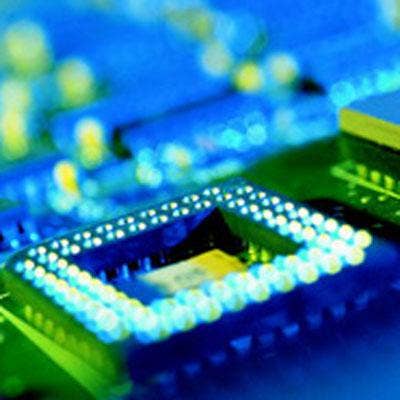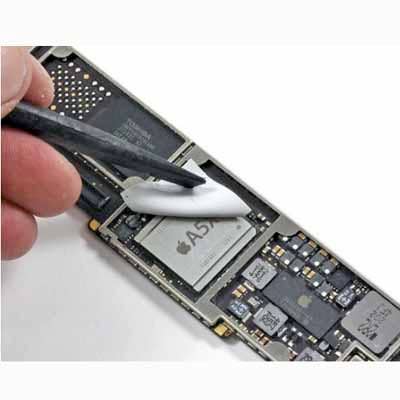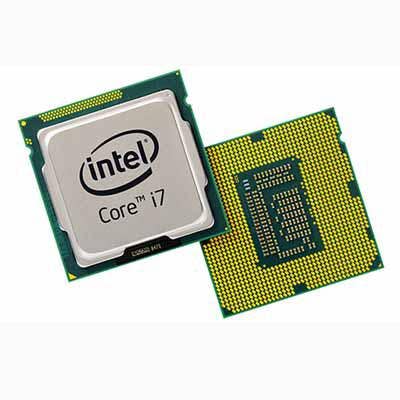The 10 Coolest CPUs, GPUs Of 2012 (So Far)

CPUs And GPUs Take Center Stage
As summer temperatures climb, competitive heat is also rising in the processor market. With new tablets and smartphones popping up like weeds in a vegetable garden, the demand for faster, more powerful system-on-chip designs has come to the spotlight like never before.
In demand for their high-speed and low-power consumption, modern SoCs combine multiple application and graphics processor cores on a single die and are well suited for today's increasingly mobile, increasingly networked prosumers. Here's a look at some of the hottest CPUs and GPUs so far in 2012.

Snapdragon Surfaces
Reports surfaced this week about a Samsung version of Microsoft's forthcoming Surface for Windows RT tablet device to be available in October. According to an article on Mobile & Apps, the Samsung Surface will be built not with an Nvidia Tegra 3 processor as is Microsoft's version, but with a Qualcomm Snapdragon S4 dual-core chip, the same chip that powers Samsung's Galaxy S III smartphone.
A less powerful chip released in a 1 GHz version earlier this year, the Snapdragon S4 series incorporates the ARMv7 instructions in two Cortex-A5 cores along with an Adreno 203 graphics processor. Faster dual-core versions are due later this year at speeds as high as 1.7 GHz, along with a quad-core version, also at that clock rate. Game on.

Nvidia Tegra 3
Meanwhile, Microsoft's Surface for Windows RT will be built to impress. It will incorporate Nvidia's Tegra 3 quad-core system-on-chip. The Tegra 3 casts four 1.4 GHz Cortex-A9 cores on the die along with a GeForce GPU with 12 graphics processor cores and support for a maximum resolution of 2,560 x 1,600 pixels. Google's Android-based Nexus 7 tablet also will feature the Tegra 3 SoC.
There's a five-core version of the innovative Tegra 3 SoC with four high-speed cores to do the primary work and a fifth low-speed, low-power core to handle stand-by duties. It's unclear whether Microsoft or Google will use this model in its design, but it seems a logical fit for features such as connected stand-by and other sleep-bound tasks that are part of Android and are expected to come with Windows 8.

Quad-Core iPad, iPhone?
The world loves to speculate about Apple's next move. The rumor mill was grinding this week about Apple's latest quad-core chip, the Apple A6, which is rumored to be the powerhouse behind the as-yet unannounced iPhone 5, iPad 4 or perhaps both. In development for about a year now, the chip's four cores already are supported in iOS 5.1, according to a January 6 report on Slashgear.

Apple A5X
With virtually all new smartphones coming with at least two cores these days, and some even with four, Apple's latest iPad 3 with just two application cores seems downright primitive. But, Apple's latest SoC -- the 1 GHz A5X -- is no slouch. Introduced in March with the new iPad, the A5X incorporates four discrete PowerVR graphics processor cores by Imagination Technologies, which develops hardware and software for 2-D and 3-D rendering for mobile and desktop applications.

Intel Ivy Bridge
Intel last year shook the world with news of its breakthrough Tri-Gate transistor technology and 22-nm process, which has given rise to a new breed of more powerful and energy-efficient computers than has ever been possible before.
Intel this year has been regularly releasing Intel Core processors, which can be found in dozens of servers, desktops and laptops. Performance results by the CRN Test Center show significantly faster speeds than prior generations of Intel Core processors, and Ivy Bridge parts fit into Sandy Bridge sockets or can be soldered onto the motherboard, a capability that could benefit Microsoft's Surface for Windows 8, an Ivy Bridge-based tablet that's expected early next year.

AMD's Trinity
It has been a busy spring for chip maker AMD. In May, AMD launched Trinity, the code name for its second-generation A-Series processors that it is positioning as a low-power, graphically superior alternative to Intel's Core i5 Ivy Bridge parts. Trinity does exceed the graphics performance of the prior generation Llano processor, and it has been optimized for notebook gaming and multimedia playback with a thermal design power of 17 watts, compared with the 25-watt TDP of Llano. The Core i5's TDP ranges between 45 and 77 watts.
In June, AMD announced that it had inked a deal with processor-IP rival ARM to license Cortex-A5 cores for use in AMD's own x86-based processors. The alliance is part of a new AMD initiative to integrate Cortex A5-native TrustZone security into AMD's 2013 mobile processor lineup. The move parallels Intel's strategy to integrate security into its hardware platforms.

Nvidia Tesla
Nvidia's Tesla K10 GPU in June raised the bar in two graphics processing categories and opened the door to new opportunities in high-performance computing in the areas of video analytics, life and material sciences, and geologic exploration, as well as for ray tracing and video rendering for entertainment and media programming.
According to a company report, Nvidia's Kepler computing architecture has achieved 4.58 teraflops, exceeding the previous record of single-precision performance by a factor of 12. It also achieved 320 GB/s, which is 6.4 times greater memory bandwidth than was previously attained by Sandy Bridge processors. All this was reportedly accomplished with a single accelerator.

Nvidia GeForce GTX 690
Gamers and others in need of high-speed graphics processing can have a taste of Tesla supercomputer-caliber technology right on the desktop with the GeForce GTX 690, Nvidia's latest high-end graphics accelerator. The 690 is built around two 28-nm Kepler GPUs with a total of 3,072 CUDA processor cores, 4 GB of GDDR5 memory (2 GB per GPU) and the ability to drive as many as four displays at a maximum resolution of 2,560 x 1,600 pixels. Up to four of these PCI Express 3.0 boards may be combined in a single system to multiply graphics processing capability, provided the system has the required space and power.

Radeon HD 7970 GHz Edition
AMD in June unveiled the Radeon HD 7970 GHz Edition, a version of its Radeon HD 7970 GPU that runs at 1 GHz and boosts memory bandwidth to 288 GBps (from 264 GBps) for high-end gamers and performance enthusiasts. Both boards include 3 GB of GDDR5 memory that are built around AMD's 28-nm GPU.
Perhaps more significant, the board employs AMD's Graphics Core Next, which is reportedly capable of taking on application processing tasks from the system CPU in addition to its GPU workloads.

Intel MIC
The Intel Many Integrated Core architecture, code-named Knights Corner, is on schedule for 2013, and it is estimated that systems using the 22-nm Xeon-based Intel MIC technology will achieve 1 TFLOPS of double-precision performance.
Knights Corner puts 50 Ivy Bridge cores with Tri-Gate technology on a PCIe board and makes them available for highly parallel applications written in standard programming languages. Applications for high-performance computing would have unparalleled levels of access to supercomputing power at a fraction of the cost, according to Intel. The goal is to achieve a thousand-fold performance increase, or Exascale, over today's petascale by 2018.
A prototype board, code-named Knights Ferry and incorporating 32 cores, has been used to perform cloud-based ray tracing and other compute-intensive light rendering techniques that once were possible only with a dedicated, high-end graphics processor and workstation.